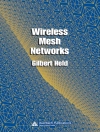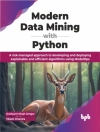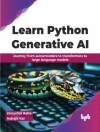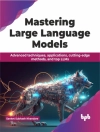This book is intended to give researchers and practitioners in the cross-cutting fields of artificial intelligence, machine learning (AI/ML) and cyber security up-to-date and in-depth knowledge of recent techniques for improving the vulnerabilities of AI/ML systems against attacks from malicious adversaries. The ten chapters in this book, written by eminent researchers in AI/ML and cyber-security, span diverse, yet inter-related topics including game playing AI and game theory as defenses against attacks on AI/ML systems, methods for effectively addressing vulnerabilities of AI/ML operating in large, distributed environments like Internet of Things (Io T) with diverse data modalities, and, techniques to enable AI/ML systems to intelligently interact with humans that could be malicious adversaries and/or benign teammates. Readers of this book will be equipped with definitive information on recent developments suitable for countering adversarial threats in AI/ML systems towards making them operate in a safe, reliable and seamless manner.
Innehållsförteckning
Part I: Game-Playing AI and Game Theory-based Techniques for Cyber Defenses.- 1. Rethinking Intelligent Behavior as Competitive Games for Handling Adversarial Challenges to Machine Learning.- 2. Security of Distributed Machine Learning:A Game-Theoretic Approach to Design Secure DSVM.- 3. Be Careful When Learning Against Adversaries: Imitative Attacker Deception in Stackelberg Security Games.- Part II: Data Modalities and Distributed Architectures for Countering Adversarial Cyber Attacks.- 4. Adversarial Machine Learning in Text: A Case Study of Phishing Email Detection with RCNN model.- 5. Overview of GANs for Image Synthesis and Detection Methods.- 6. Robust Machine Learning using Diversity and Blockchain.- Part III: Human Machine Interactions and Roles in Automated Cyber Defenses.- 7. Automating the Investigation of Sophisticated Cyber Threats with Cognitive Agents.- 8. Integrating Human Reasoning and Machine Learning to Classify Cyber Attacks.- 9. Homology as an Adversarial Attack Indicator.- Cyber-(in)security, revisited: Proactive Cyber-defenses, Interdependence and Autonomous Human Machine Teams (A-HMTs).
Om författaren
Prithviraj (Raj) Dasgupta is a computer engineer in the Distributed Systems Section, Information Technology Division at the U.S. Naval Research Laboratory, Washington D.C. His research interests are in the areas of artificial intelligence, multi-agent systems, game theory and machine learning. From 2001 through 2019, he was a professor in the Computer Science Department at the University of Nebraska, Omaha, where he had founded and directed the CMANTIC Robotics Lab. His lab received federal funding of over $4 million and established successful, funded multi-university collaborations across multiple disciplines including mechanical and electrical engineering, surgery and biomechanics. He has published over 150 papers in leading journals and conferences in his area and serves on the program committee of major AI conferences including AAAI, IJCAI, and AAMAS; IEEE conferences ICRA, IROS, and ICARSC; and regularly reviews manuscripts for premier journals in the areas of machine learning, multi-agent systems and robotics. He has mentored several Ph.D., Masters and undergraduate students and has continued involvement in STEM mentoring activities for high school students. Dr. Dasgupta is a senior member of IEEE. He received the highest research award from the University of Nebraska, Omaha, called ADROCA, in 2017. He received his Ph.D. and M.S. in Computer Engineering from the University of California, Santa Barbara and his B. Engg. in Computer Science from Jadavpur University, India.
Joseph B. Collins heads the Intelligent Distributed Systems Section in the Information Management & Decision Architectures Branch of the Information Technology Division at the Naval Research Laboratory (NRL). He received his Ph.D. in Physics from Brown University and has worked at NRL for over 30 years where he has investigated, designed and developed intelligent decision support systems as components of Navy simulation, command and control, and test and evaluation architectures. Over his career he has authored a variety of papers, conference publications, and book chapters. A recurring theme in his work for the Navy is the integration of sensor data and other information with analytical and physics-based models to arrive at intelligent decisions.
Ranjeev Mittu is the Branch Head for the Information Management and Decision Architectures Branch within the Information Technology Division at the U.S. Naval Research Laboratory. Mr. Mittu leads a multidisciplinary group of scientists and engineers that conduct research in visual analytics, human performance assessment, decision support systems, and enterprise systems development. His research expertise is in multi-agent systems, artificial intelligence, machine learning, data mining, and pattern recognition and anomaly detection. He has a track record for transitioning technology solutions to the operational community, and received a technology transfer award at NRL in August 2012 for his contributions to USTRANSCOM. He has authored one book, coedited five books, and written numerous book chapters and conference publications and received an MS in Electrical Engineering from The Johns Hopkins University. He is currently participating in (1) The Technical Cooperation Program (TTCP) which promotes scientific exchange between New Zealand, UK, Australia, Canada and USA; (2) the NATO Information Systems Technology Panel; and (3) the Do D Reliance 21 C4I Community of Interest. He has previously served as a Subject Matter Expert for the Joint IED Defeat Organization (2007-2008), participated as a member of the Netcentric Systems Test working group in collaboration with the U.S. Army Program Executive Office for Simulation, Training, and Instrumentation (PEO STRI), and served on NRL’s Invention Evaluation Board (IEB) to evaluate technologies and concepts for potential filing with the USPTO (2006-2008).












